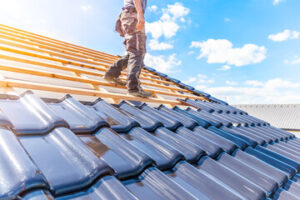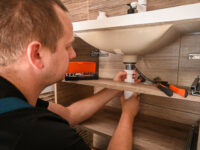What Is Roof Restoration?
Roof Restoration is a great way to extend the lifespan of your existing roof without the need to strip back and replace. It’s also far less disruptive to building occupants and takes a fraction of the time of a full replacement.
A well-restored roof looks fantastic, adding value to your home and a good impression on potential buyers. The Roof Restoration process involves a thorough inspection, cleaning and application of protective coatings.
The first step in any roof restoration is a thorough inspection. This can help identify problem areas and address them prior to coating application. This can reduce repair costs and ensure that the coatings adhere properly. Inspectors look for cracked or missing shingles, loose flashing and leaks. They also check the roof decking for signs of deterioration, such as sagging or mold. They can also inspect the gutter system for clogged drains and granules in the downspouts, which indicate deteriorating shingles.
The inspection process may include the use of a drone for hard-to-reach areas, as well as for thermal imaging to reveal any moisture issues. This can be particularly useful for flat roofs, where ponding water can cause membrane damage and create leaks.
After completing the inspection, the roof is cleaned to remove dirt, debris, moss and other contaminants. This can be done either by chemical cleaning or by pressure washing, depending on the type of roof. The cleaner surface is then ready for the application of the restoration coatings.
A restored roof protects the building and its occupants, enhances curb appeal, and can improve energy efficiency. It can also increase the resale value of the property. However, it is important to carry out regular maintenance to prolong the life of a roof and prevent major problems.
A roof that is properly maintained can extend its life by up to 15 years and help avoid costly repairs and replacements. A restored roof can also increase a home’s market value and enhance its aesthetics, making it more appealing to potential buyers. If a roof is neglected, it can become rotting and leaking, which can lead to serious structural damage. Roof restoration can be less expensive than a complete roof replacement and is much less disruptive to the occupants of the building. However, it is important to perform a thorough inspection and consider all the options before choosing a roofing contractor for your roof restoration project. Choosing the right roofing contractor is vital to protecting your investment and ensuring a long-lasting, high-quality roof. This will keep your home safe and comfortable for years to come.
Cleaning
Roof restorations involve a process of cleaning, repairing and re-coating the tiles. This typically includes a pressure wash that removes dirt, moss and other contaminants. It also helps to identify and repair damage that may have occurred over time, such as cracking tiles and leaking areas.
The next step is to clean the entire surface of the roof, which may include the removal of stains, paint chips or other debris. It’s important to do this to prepare the surface for recoating and ensure that the new coating adheres properly.
This is where experienced roofers come into play. They understand the peculiar water patterns and can often locate the source of a leak or stain far away from where it first appeared inside your home.
It’s a good idea to cover pools and spas to protect the chemicals that may be used during the cleaning process. A pool cover will also prevent falling debris from entering the water and altering its chemical balances.
If you have a pool or spa, it’s also a good idea to trim any surrounding trees to reduce the risk of limbs falling onto the roof and damaging the tiles. This is also an opportunity to improve the drainage of your gutters by clearing out any blockages.
For multi-unit buildings or areas governed by a body corporate, it’s best to set aside a space for the roofing contractor to store equipment and utilise as a work zone. This limits vehicle movements that can disrupt the work flow and ensures safety for all involved.
The final step of the Roof Restoration Process involves re-coating the tiles with protective materials that improve weather resistance and durability. This is a key element of roof maintenance that can add to the longevity and value of your property and help minimise energy costs.
It’s a good idea to communicate with your neighbours before the work begins to ensure they are aware of the noise and dust that is generated during a Roof Restoration. This is courteous and will help to foster long term neighbourhood harmony.
Repairs
Your roof takes a beating from the elements. It can be impacted by everything from heavy rain to hail and sun exposure. It is important to keep up with maintenance to prevent small problems from becoming big ones, such as a leaking roof or missing shingles. A well-executed roof restoration can add years to your roof’s lifespan, preventing the need for a replacement and delaying costs. It also improves the appearance and boosts the value of your property.
The first step of a roof restoration is to thoroughly inspect it. This is a critical stage to identify any potential problems and determine the scope of work required. This will help you create a budget and plan for the project. It is also the time to address any repairs that are necessary. The next stage is cleaning. This involves removing all debris and preparing the surface for treatment. For metal roofs, this means using a power wash to remove dirt, grime, and rust. For asphalt shingle roofs, this means washing and applying a cleaning solution. Then, a special coating is applied to protect the roof from the weather and other environmental factors.
During the repair process, trained professionals will replace any damaged or loose shingles and re-seal any leaks. They will also repair cracks and ridge capping to stop water damage and extend the life of your roof. In some cases, the roof may need to be replaced or rebuilt completely. For example, if the roof is older than 20 years or has had major damage in the past, a complete replacement may be required.
Generally, roof restoration is less invasive and more cost-effective than a replacement, making it an attractive option for homeowners. A properly executed roof restoration can add 5-15 years to your asphalt shingle roof’s lifespan, delaying the need for a costly replacement. It can also improve the appearance of your home, increase energy efficiency, and reduce maintenance costs. It can even enhance the curb appeal of your property and increase its resale value. If you are considering a roof restoration, be sure to do your research and choose a reputable company with an excellent reputation and experience in the industry.
Coating
A roof restoration coating system offers an effective, permanent solution to a number of issues that can plague commercial structures, such as leaks and energy loss. Rather than replacing the existing roofing materials with new ones, which can be an expensive and time-consuming endeavor, the roof is coated with an elastomeric membrane that can be used to seal leaks, reduce energy costs, and extend the life of the building’s roof.
Roof Restoration can be done on all types of commercial roofs, including metal, TPO, PVC, built-up roofing systems, EPDM, and shingles. The process starts with a thorough inspection and power wash of the existing roof surface. A primer may be applied, depending on the roof material, and then a polymer-based coating is sprayed onto the roof.
The process can be performed in the early spring through late fall, but must be completed when the roof is dry and free of ice and snow. The roof must also be structurally sound and free of wet insulation or rotting components. An infrared inspection may be required to verify that all wet areas are found and repaired. Seams and penetration points must be sealed, and the membrane should be cleaned thoroughly using a RC 300 Cleaner/Degreaser before application.
Once the surface of the roof is prepared, it’s easy to apply the coating. Most contractors will spray the coating directly onto the existing surface of the roof. They can also roll it on, and if there are any areas that are difficult to reach or obstructed with curbs and rooftop equipment, polyester fabric is placed in the corners for reinforcement.
The entire process is fast and straightforward, allowing businesses to continue operating without interruption. In contrast, a complete roof replacement requires shutting down the business, and even then, it can take weeks to reopen after the work is completed.






